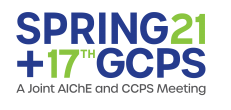
PSM Experts Present at 2021 AIChE Global Congress on Process Safety
 Provenance Consulting is excited to announce that four of our PSM experts will present alongside dozens of other industry professionals at the AIChE Global Congress on Process Safety. According to AIChE, “the Global Congress on Process Safety covers the critical needs of process safety practitioners more broadly and deeply than any other conference.”
Provenance Consulting is excited to announce that four of our PSM experts will present alongside dozens of other industry professionals at the AIChE Global Congress on Process Safety. According to AIChE, “the Global Congress on Process Safety covers the critical needs of process safety practitioners more broadly and deeply than any other conference.”
This year will mark the 10th year since Provenance started participating in this conference, and we are glad to be back. While still a virtual event, Provenance experts will be available in our exhibitor booth and during the networking hours to discuss pressure relief system design, safeguards and risk assessments, and more. View the conference technical grid (PDF).
Check out the abstracts for our presentations below, use the links to connect with our speakers. For more information on your PSM/RMP needs, please contact our process safety experts at 281.206.7079.
Poster Presentation by Lauren Mercer, Account Director
 Relief Systems Work Is a Money Pit: Change My Mind
Relief Systems Work Is a Money Pit: Change My Mind
As a relief system engineer, I revalidate and correct pressure relief system designs daily. Many times, the owner/operator views the pressure relief systems efforts as a ‘bottomless money pit’ that never returns value and is seemingly never complete. This poster and accompanying short video will dispel this notion and reveal how to ensure your pressure relief systems efforts turn into cost-avoidance measures and high-value money-makers.
This poster session summarizes the business purposes of pressure relief system efforts, describes how good relief systems design bases are converted into cost-avoidance measures, and shares how targeted relief systems efforts can turn into net-positive returns for your facility.
Live Q&A Session on Wed, Apr. 21 between 3:00-4:00 pm CT.
Whitepaper Presentations
How Long between Cause and Consequence in a PHA?
 By Patrick Fisher, PHA Facilitator
By Patrick Fisher, PHA Facilitator
How much time should a Process Hazard Analysis (PHA) team consider between a discrete cause and a credible consequence? OSHA 1910.119(e) requires that all Process Hazard Analyses (PHAs) review and document the “Consequences of failure of engineering and administrative controls”. The generally accepted best practice for fulfilling this is to document scenario consequences without safeguards.
The problem is that we know that even a small deviation can result in a major change in a process given enough time. Because of that, almost every PHA there is an assumption made (documented or otherwise) about the timeframe for a cause to lead to a consequence. Are PHA teams consistent in the assumptions they make? What do regulators and industry groups have to say? How long has elapsed between causes and consequences in real incidents? How can you make sure your PHA teams are consistently following your guidelines and best practices?
Live Presentation and Q&A Session on Wed, Apr. 21 at 11:20 am CT.
Session: Tutorials in PPSS I: Lack of Attention has Consequences for Process Evaluation
Determining the Effectiveness of the Human Safeguard
 By James Topp, Account Manager
By James Topp, Account Manager
A team conducting a Process Hazard Analysis (PHA) reviews a vessel with a pressure alarm– a common safeguard against many overpressure scenarios the vessel could experience. Everyone on the PHA team feels the alarm provides plenty of time for an operator to respond to any given overpressure scenario and continues with the PHA. This may be acceptable in some cases: the expected response time to that pressure alarm is sufficient for an operator to respond to a blocked outlet. But it could be a costly mistake in other cases: if a bypass on the fuel gas line is left open, the MAWP of the vessel is exceeded in under 60 seconds – not nearly enough time for the operator to respond before potential loss of containment.
This situation – where alarms are used as safeguards without proper vetting and consideration of operator response time to those alarms – is occurring more frequently throughout industry. With the move toward more technology-driven and interconnected facilities, alarms have become one of the most prevalent safeguards in facilities. To appropriately use alarms as safeguards, sites must ensure alarms have clear instructions on the correct response and there is adequate time to mitigate the scenario.
Without a clear idea of which alarms can or cannot be acceptable safeguards for given conditions or scenarios, facilities may leave themselves unprotected for scenarios deemed appropriately mitigated by a risk study. Alternatively, they could unnecessarily spend their budget installing more robust safety systems when operator intervention through alarm would be adequate.
This paper and presentation will discuss ways to determine the amount of time an operator would have to respond to an alarm condition, ways to account for the human factors of alarm response and examine appropriate best practices for the management of alarms as safeguards.
Live Presentation and Q&A Session on Wed, Apr. 21 at 2:10 pm CT.
Session: Tutorials in PPSS II: When Process Deviation is Normalized
“Why Do I Have Relief System Inadequacies NOW?” Incidents and Industry Events That Have Influenced Changes in Relief System Design
 By Lauren Hendrickson, Relief Systems Technical Expert
By Lauren Hendrickson, Relief Systems Technical Expert
At the management level, many aging facilities are discovering that their long-time relief system elements are no longer deemed adequate. Many are left asking why a relief valve is being found with concerns when they have been operating with the valve for years.
The paper will focus on what has caused relief systems evaluations to change as industry understanding evolved. It will examine incident-based changes leading to a reinspection of hazards and briefly highlight quantification changes that may impact relief valve sizing. The intent is to create an understanding of changes to pressure relieving systems to facilitate discussion of any inadequacies with site and company management and highlight common reasons for updates to a relief system’s design basis.
Live Presentation and Q&A Session on Thurs, Apr. 22 at 3:00 pm CT.



0 comments
Write a comment